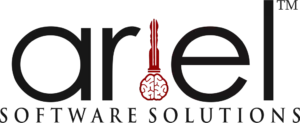Revenue Recognition: A Business Minefield You Didn’t See Coming
You’ve just closed the biggest deal of the year. Your finance team is celebrating, your revenue numbers are skyrocketing, and everything looks perfect on paper. But here’s the catch: Can you recognize that revenue yet? Or do you need to wait? A month? A year? Longer? Welcome to the intricate, often frustrating world of revenue recognition challenges, where timing is critical and the rules are far from straightforward.
This isn’t just about tracking numbers or updating spreadsheets. Revenue recognition challenges involve high-stakes processes where even a small error can lead to compliance failures, financial restatements, and serious legal consequences. For companies navigating ASC 606 and IFRS 15, it’s a complex landscape of evolving contracts, multiple performance obligations, and relentless regulatory scrutiny. A misstep here doesn’t just mean lost revenue; it can damage your reputation, erode investor trust, and jeopardize your business’s future.
So, why do revenue recognition challenges persist? And how can businesses stop struggling with them? Let’s dive in.
Why Businesses Struggle With Revenue Recognition
- 1. The Illusion of Simplicity: Revenue Isn’t Just “Money In”
Most businesses think of revenue in terms of transactions: “We sold something, we got paid, job done.” But in the world of accounting, it’s rarely that simple. Depending on the nature of the deal, revenue may need to be recognized over time, after performance obligations are met, or based on complex variables like contingencies and future deliverables.
For example, a SaaS company offering annual subscriptions can’t recognize the full payment upfront; it has to allocate revenue over 12 months. Similarly, a construction company may receive progress payments but can only recognize revenue as work is completed. The challenge? Tracking and managing these intricacies without mistakes. AI in revenue recognition plays a crucial role here by automating these allocations and minimizing human error.
- 2. Multi-Element Contracts: The Jigsaw Puzzle That Won’t Fit
Gone are the days of straightforward product sales. Today’s businesses operate on multi-element contracts that bundle products, services, upgrades, and support into a single agreement. Each of these components might have different revenue recognition challenges, making it a nightmare to separate and account for them correctly.
A company selling software with an implementation package and a year of support must recognize revenue differently for each element. Failing to do so can result in financial misstatements or even compliance violations. By leveraging AI in revenue recognition, businesses can streamline contract evaluations, ensuring each element is correctly accounted for.
- 3. Regulatory Compliance: A Moving Target
Keeping up with ASC 606, IFRS 15, and industry-specific regulations requires businesses to stay constantly updated. These standards dictate when and how revenue can be recognized, but they also evolve. A minor misinterpretation can lead to massive fines and investor panic. Revenue forecasting tools help businesses stay ahead by predicting regulatory impacts and ensuring compliance before issues arise.
Keeping up with ASC 606, IFRS 15, and industry-specific regulations requires businesses to stay constantly updated. If you’re looking for a detailed guide on how revenue recognition software ensures compliance with these standards, check out our in-depth post on “How Revenue Recognition Software Helps Businesses Stay ASC 606 & IFRS 15 Compliant”.
- 4. Revenue Leakage: The Silent Killer of Profits
One of the biggest but least talked about revenue recognition challenges is revenue leakage, money that should have been recorded as revenue but slipped through the cracks due to inefficiencies, human errors, or mismanagement.
Consider a company that mistakenly bills a client for only 10 months instead of 12 due to a spreadsheet error. That’s two months of lost revenue, and it happens more often than businesses realize. AI in revenue recognition prevents these errors by cross-checking contract terms and billing schedules, ensuring no revenue is lost.
- 5. The Spreadsheet Trap: A Disaster Waiting to Happen
Many companies, even large enterprises, still rely on spreadsheets to manage revenue recognition challenges. The result? A fragile system that’s prone to formula errors, accidental deletions, and version control chaos. What works for a small business quickly collapses when handling thousands of contracts with different recognition schedules. Advanced revenue forecasting tools can replace outdated spreadsheets with automated, real-time financial insights.
How Technology is Transforming Revenue Recognition
- 1. Automated Revenue Recognition: The Death of Guesswork
Advanced ERP systems and AI in revenue recognition platforms can automatically categorize revenue, track contract terms, and ensure compliance in real time. This eliminates human error and dramatically improves reporting accuracy.
With automation, a SaaS company can instantly allocate subscription payments over the correct timeframe, while a construction firm can link revenue recognition to project milestones without manual intervention. Revenue forecasting tools further enhance this process by predicting future cash flow and revenue trends.
- 2. AI-Powered Contract Analysis: Decoding the Fine Print
AI in revenue recognition can analyze contracts in seconds, identifying key clauses, obligations, and revenue recognition triggers. No more sifting through legal jargon or risking misinterpretation; AI ensures that revenue is recognized according to contract terms without errors.
- 3. Cloud-Based Financial Platforms: Real-Time Visibility
Cloud-based revenue recognition platforms integrate seamlessly with billing systems, CRMs, and accounting software, providing real-time visibility into revenue streams across geographies and business units. This allows CFOs and financial teams to make informed decisions with up-to-the-minute data.
- 4. Predictive Analytics: Smarter Financial Forecasting
Modern analytics tools don’t just track revenue; they predict it. By analyzing historical data and contract patterns, revenue forecasting tools can detect compliance risks before they happen and optimize financial planning.
- 5. Blockchain for Revenue Transparency
Blockchain technology is emerging as a powerful tool in financial compliance. By creating an immutable ledger of transactions and revenue recognition challenges, businesses can ensure transparency and eliminate disputes over contract fulfillment.
The Future of Revenue Recognition: Smarter, Faster, Automated

The complexities of revenue recognition challenges aren’t going away, but the struggle to manage them can. Businesses that embrace automation, AI in revenue recognition, and revenue forecasting tools will gain a competitive edge, reducing financial risk and ensuring compliance without the headaches.
At Ariel Software Solutions, we specialize in building cutting-edge financial automation tools that take the pain out of revenue recognition challenges. Whether you’re dealing with complex contracts, multi-element agreements, or shifting compliance standards, our AI in revenue recognition solutions ensure accuracy, efficiency, and peace of mind.
Don’t let outdated processes cost you time and money. Let’s revolutionize your revenue recognition together. Get in touch.
FAQs on Revenue Recognition Challenges & Solutions
1. Why is revenue recognition such a big deal for businesses?
Revenue recognition challenges directly impact financial statements, compliance, and investor trust. If done incorrectly, it can lead to misstated earnings, regulatory penalties, and reputational damage.
2. What industries face the most challenges in revenue recognition?
Industries like SaaS, telecom, construction, healthcare, and manufacturing struggle due to subscription models, bundled contracts, and performance-based pricing structures.
3. How does automation improve revenue recognition?
AI in revenue recognition ensures compliance, accuracy, and efficiency by applying regulatory standards, tracking contract changes, and eliminating human errors.
4. What’s the first step to implementing an automated revenue recognition system?
Start by assessing your current processes, identifying key pain points, and choosing a trusted financial automation provider like Ariel Software Solutions for a seamless transition.








